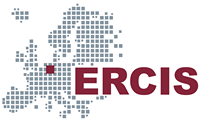Complexity Example
(Usage hints for this presentation)
Winter Term 2023/2024
Dr. Jens Lechtenbörger (License Information)
Sample Algorithms
- Determine Big O complexity for following algorithms in Python!
- Background
Instructions
- Figure out what the algorithms on the next slides do.
- If you are not sure, maybe copy&paste into Python Tutor, which enables step-by-step execution with visualizations of values.
- Determine the algorithms’ complexities in terms of numbers of
necessary plus operations.
- If you are puzzled about the focus on plus operations, note
that they occur at the inner-most level of nesting in
whileloops. For each iteration of a loop, a fixed number of other operations is executed, and those are covered by a constant factor in the definition of Big O complexity (\(M\) at Wikipedia.)
- If you are puzzled about the focus on plus operations, note
that they occur at the inner-most level of nesting in
Subsequent quizzes lead to solutions. Please try yourself first.
Naive Multiplication
def naive_mult(op1, op2):
if op2 == 0: return 0
result = op1
while op2 > 1:
result += op1
op2 -= 1
return result
print(naive_mult(2, 3))
- Some notes
- Code on left is meant for non-negative integers
- Better code would test this
- Python basics
def naive_mult(op1, op2)declares functionnaive_multwith two operands==tests for equality,=is assignment to variable on leftresult += op1is short forresult = result + op1- thus,
op1is added toresult -=similarly
- thus,
returnexits the function, delivers result
- Code on left is meant for non-negative integers
A solution
Naive Exponentiation
def naive_mult(op1, op2):
if op2 == 0: return 0
result = op1
while op2 > 1:
result += op1
op2 -= 1
return result
def naive_exp(op1, op2):
if op2 == 0: return 1
result = op1
while op2 > 1:
result = naive_mult(result, op1)
op2 -= 1
return result
print(naive_exp(2, 3))
- Some notes
naive_multis copied from previous slidenaive_expshares same basic structure- But with invocation of
naive_multinstead of plus operation
- But with invocation of
A solution
A “Small” Change
- What happens if the order of arguments to
naive_multon the previous slide was reversed, i.e., ifnaive_mult(op1, result)instead ofnaive_mult(result, op1)was executed?- Clearly, as multiplication is commutative, the result does not change.
- What about the resulting complexity?
A surprise?
License Information
Source files are available on GitLab (check out embedded submodules) under free licenses. Icons of custom controls are by @fontawesome, released under CC BY 4.0.
Except where otherwise noted, the work “Complexity Example”, © 2019-2022 Jens Lechtenbörger, is published under the Creative Commons license CC BY-SA 4.0.
In particular, trademark rights are not licensed under this license. Thus, rights concerning third party logos (e.g., on the title slide) and other (trade-) marks (e.g., “Creative Commons” itself) remain with their respective holders.
